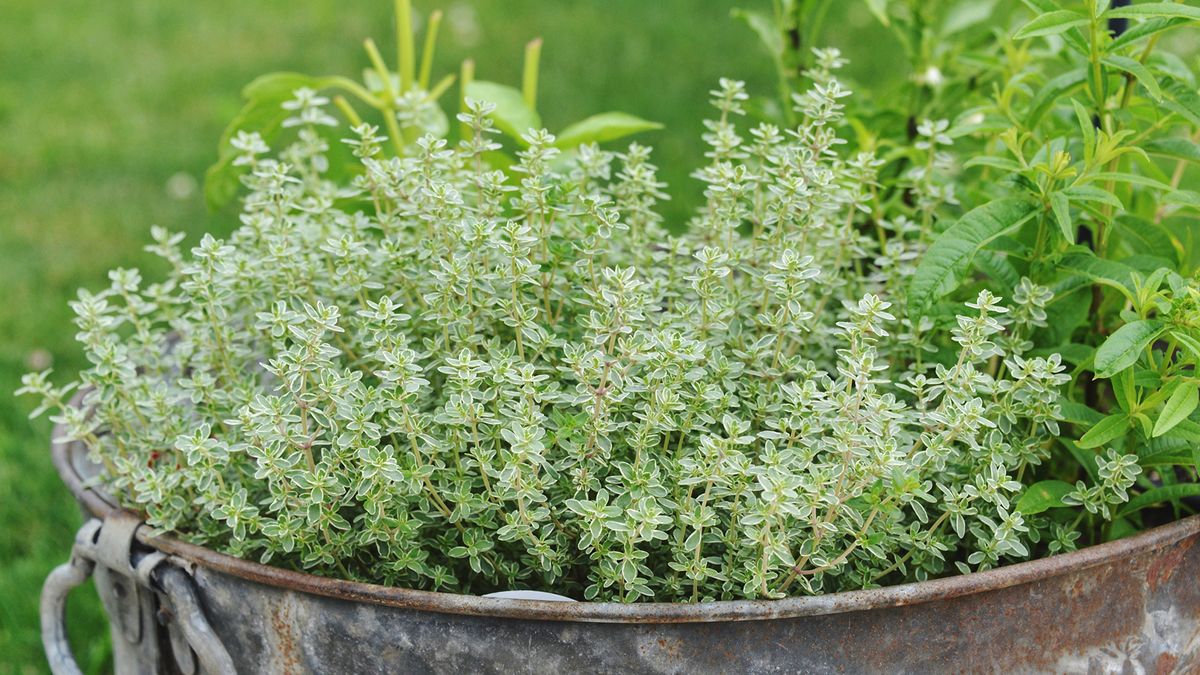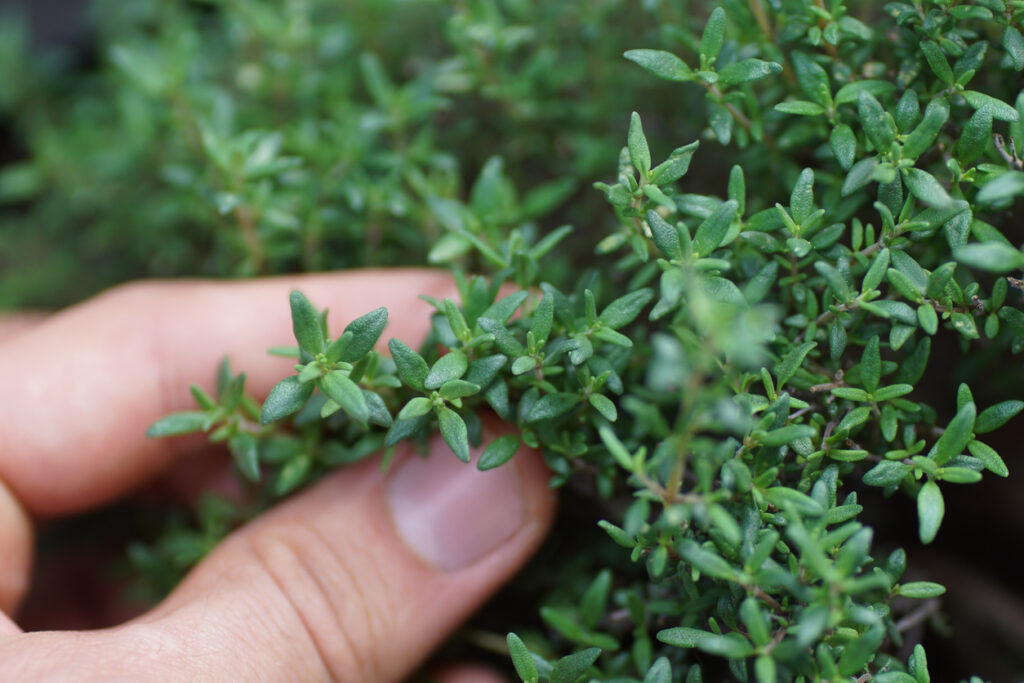Preparing the Soil: Creating an Ideal Environment for Thyme Growth
Thyme requires well-draining soil to thrive, and a slightly acidic pH between 6.0 and 7.0 is ideal. If your soil is heavy clay or prone to waterlogging, consider adding organic matter such as compost or well-rotted manure to improve its structure. This will help to break up the clay and allow excess water to drain away, reducing the risk of root rot and other problems.
In addition to improving the soil’s structure, adding organic matter will also provide essential nutrients for healthy thyme growth. Thyme is a low-feeding herb, but it will still benefit from regular applications of fertilizer. A balanced, water-soluble fertilizer applied at half the recommended strength will provide all the necessary nutrients for healthy growth.
When preparing the soil for thyme, it’s also important to consider the soil’s pH level. Thyme prefers a slightly acidic to neutral soil pH, and will not thrive in alkaline conditions. If your soil is too alkaline, consider adding elemental sulfur or peat moss to lower the pH. Conversely, if your soil is too acidic, add lime to raise the pH.
Once you have prepared the soil, it’s essential to ensure that it is free of weeds and debris. Thyme is a low-growing herb that can be easily overwhelmed by weeds, so it’s crucial to remove any weeds or debris before planting. This will give your thyme plants the best possible start and help them to establish themselves quickly.
Preparing the Soil: Creating an Ideal Environment for Thyme Growth
When it comes to growing thyme, the quality of the soil is crucial. Thyme requires well-draining soil to thrive, and a slightly acidic pH between 6.0 and 7.0 is ideal. If your soil is heavy clay or prone to waterlogging, consider adding organic matter such as compost or well-rotted manure to improve its structure. This will help to break up the clay and allow excess water to drain away, reducing the risk of root rot and other problems.
In addition to improving the soil’s structure, adding organic matter will also provide essential nutrients for healthy thyme growth. Thyme is a low-feeding herb, but it will still benefit from regular applications of fertilizer. A balanced, water-soluble fertilizer applied at half the recommended strength will provide all the necessary nutrients for healthy growth.
When preparing the soil for thyme, it’s also important to consider the soil’s pH level. Thyme prefers a slightly acidic to neutral soil pH, and will not thrive in alkaline conditions. If your soil is too alkaline, consider adding elemental sulfur or peat moss to lower the pH. Conversely, if your soil is too acidic, add lime to raise the pH.
Once you have prepared the soil, it’s essential to ensure that it is free of weeds and debris. Thyme is a low-growing herb that can be easily overwhelmed by weeds, so it’s crucial to remove any weeds or debris before planting. This will give your thyme plants the best possible start and help them to establish themselves quickly.
By following these simple steps, you can create an ideal environment for thyme growth and set yourself up for success when growing this fragrant herb. Whether you’re a seasoned gardener or just starting out, with the right soil preparation, you’ll be well on your way to growing healthy, thriving thyme plants.
How to Plant Thyme: A Step-by-Step Guide
Planting thyme is a straightforward process that requires some basic knowledge and attention to detail. Whether you’re direct sowing, transplanting, or propagating, the key to successful thyme growth is to provide the right conditions and care. Here’s a step-by-step guide on how to plant thyme:
Direct Sowing: Thyme can be direct sown in the garden in the spring or fall, when the weather is cooler. Choose a location with well-draining soil and full sun to partial shade. Sow the seeds 1-2 inches apart and 1/4 inch deep. Water gently but thoroughly, and keep the soil consistently moist during the first few weeks after sowing.
Transplanting: If you’re starting thyme indoors, wait until the seedlings have 2-3 sets of leaves before transplanting them outside. Harden off the seedlings by gradually exposing them to outdoor conditions over the course of 7-10 days. Transplant the seedlings 6-8 inches apart, and water well to settle the soil.
Propagation: Thyme can also be propagated through cuttings or division. Take 2-3 inch stem cuttings from the tips of the thyme plant, and remove the lower leaves. Plant the cuttings in a pot filled with well-draining soil, and water gently. Keep the soil consistently moist until the new plants are established.
Spacing and Depth: Regardless of the planting method, make sure to space the thyme plants 6-8 inches apart to allow for good air circulation and growth. Plant the thyme at the same depth as it was in the pot, and water well to settle the soil.
After planting, keep the soil consistently moist but not waterlogged. Thyme prefers well-draining soil and can be susceptible to root rot if the soil is too wet. With proper care and attention, your thyme plants should thrive and provide you with a bountiful harvest of fragrant leaves and stems.
Thyme Care 101: Watering, Pruning, and Pest Control
Once thyme is planted, it requires regular care to ensure healthy growth and prevent common problems. Proper watering, pruning, and pest control are essential for maintaining a thriving thyme plant.
Watering: Thyme prefers well-draining soil and should be watered carefully to avoid overwatering. Water the plant when the top inch of soil feels dry to the touch, and avoid getting water on the leaves to prevent fungal diseases. Thyme is drought-tolerant, but consistent moisture will promote healthy growth.
Pruning: Pruning is essential for promoting bushy growth and preventing thyme from becoming leggy. Pinch off the tips of the stems to encourage branching, and trim back the plant by one-third to one-half in the spring to maintain shape. Regular pruning will also help to prevent thyme from flowering, which can reduce the flavor and aroma of the leaves.
Pest Control: Thyme is generally pest- and disease-free, but it can be susceptible to root rot, leaf spot, and spider mites. Inspect the plant regularly for signs of pests or diseases, and treat promptly if necessary. Use organic pest control methods whenever possible, such as neem oil or insecticidal soap, to avoid harming beneficial insects.
Common pests that can affect thyme include spider mites, mealybugs, and aphids. Regularly inspect the plant for signs of infestation, such as white powdery patches or sticky honeydew droplets. Treat infestations promptly with insecticidal soap or neem oil, and ensure good air circulation to prevent the spread of disease.
By following these simple care tips, you can keep your thyme plant healthy and thriving. Remember to water carefully, prune regularly, and inspect the plant regularly for signs of pests or diseases. With proper care, thyme can be a low-maintenance and rewarding addition to your herb garden.
Common Mistakes to Avoid When Growing Thyme
While thyme is a relatively low-maintenance herb, there are several common mistakes that can affect its growth and flavor. By avoiding these mistakes, you can ensure a healthy and thriving thyme plant
Common Mistakes to Avoid When Growing Thyme
While thyme is a relatively low-maintenance herb, there are several common mistakes that can affect its growth and flavor. By avoiding these mistakes, you can ensure a healthy and thriving thyme plant.
Overwatering: Th
Common Mistakes to Avoid When Growing Thyme
While thyme is a relatively low-maintenance herb, there are several common mistakes that can affect its growth and flavor. By avoiding these mistakes, you can ensure a healthy and thriving thyme plant.
Overwatering: Th
Common Mistakes to Avoid When Growing Thyme
While thyme is a relatively low-maintenance herb, there are several common mistakes that can affect its growth and flavor. By avoiding these mistakes, you can ensure a healthy and thriving thyme plant.
Overwatering: Th


:max_bytes(150000):strip_icc()/grow-thyme-indoors-1902495-05-8eeb0bffe5e2421cacca15e200b1382c.jpg)



:max_bytes(150000):strip_icc()/how-to-grow-thyme-1402630-04-967f1ec5b2fe45de9a8e34ad76228353.jpg)
:max_bytes(150000):strip_icc()/how-to-grow-thyme-1402630-hero-d44ccea3e3604c1db97d23761b25de52.jpg)
